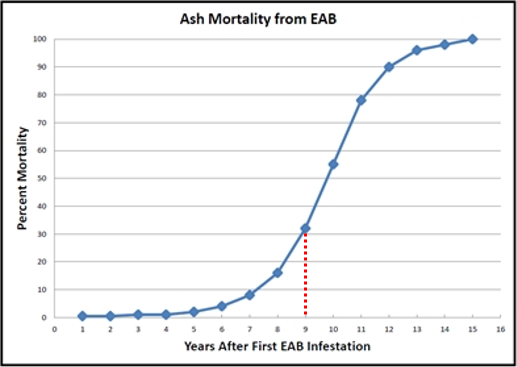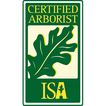Emerald Ash Borer (EAB)The Emerald Ash Borer (EAB) was first detected in Omaha in 2016. Research shows that within 9 years of EAB being discovered in a municipality, 30% of untreated ash trees will die. Within 10 years, that number increases exponentially to 50%, then 80% at 11 years.
Our treatment methods:
Trunk injections are proven to be the most effective method of protection for your tree. We inject the trunk of your tree using a solution of Emamectin Benzoate (4%). We offer these trunk injections spring through early summer in order to coincide with the lifecycle of the beetle. Trunk injections are effective for two years. We also offer trunk spray treatments of dinotefuran for very small trees, trees in tight spaces that are difficult to inject, trees with root issues, or trees that will be treated late in the summer (mid-July through August). Trunk sprays are effective for one year. How often and for how long will I need to treat my tree? You will need to treat it every other year. Should all ash trees be treated? Not all ash trees are ideal candidates for treatment. Consider the factors below before treating, keeping in mind that it may be more wise to plant its replacement now so that by the time you need to remove your ash tree, you've got a sizable stand-in ready to go. Looking for ideas on what to plant? Here is a great list of suggested trees from the Nebraska Forest Service.
I can't decide! What do I do?! We evaluate trees on a case-by-case basis and help you determine whether or not it is in your best interest to treat the tree long term or plan for its replacement. Regardless, trees should be treated until they are removed and should not be left to decline. Dying ash trees are brittle and dangerous. How do the treatments work? Treatments target EAB in two ways: The adult beetles that eat the leaves will ingest the insecticide, but most importantly - so will the larvae that feed on the live wood beneath the bark in August. The larvae then die before they are able to eat enough wood to disrupt the flow of water and nutrients up into the canopy. When should I treat the trees? Treatments must be performed before September in order to be most effective in killing the larvae that feed inside your tree. Trust an arborist! We cannot urge you strongly enough to be proactive and to get a plan in place if you have a valuable ash tree that you would like preserve. Aside from the chemical treatments themselves, hiring a professional, Certified Arborist will be the strongest tool in your arsenal! Updated 4-1-24 |
Do I have an ash tree?
Both species of ash (green and white) have distinguishing leaf characteristics: 5 to 9 "leaflets" arranged on opposite sides of the central stem of a leaf (pictured). Many other species have this leaf arrangement, but only an ash tree has leaves arranged oppositely on the twig, rather than alternately. The photos below also show a distinct diamond-patterned bark.
Resources
|





